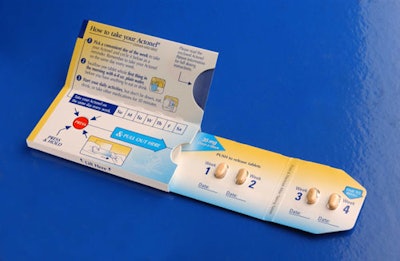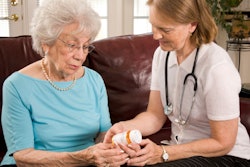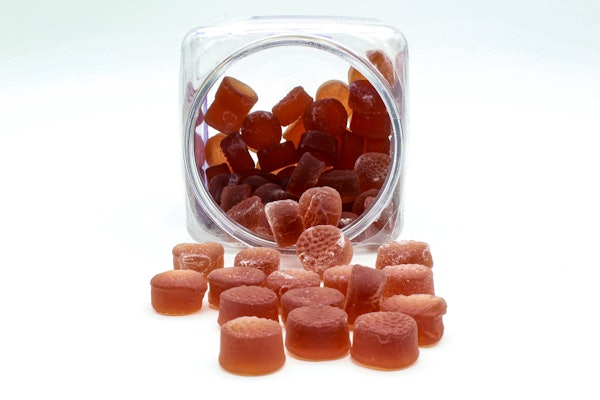
Better packaging for pharmaceuticals. Sounds like a good idea. After all, many products that could be argued are less important than pharmaceuticals have received better packaging over the years. Ketchup containers got smart, going to plastic and then standing on their heads for our convenience. Chewing gum packaging has gone through numerous changes seeking convenience and cost savings. Surely pharmaceutical products deserve the attention and effort afforded ketchup and gum, yes?
This concept really hits home for those of us involved in the pursuit of smarter packaging for pharmaceuticals. Why has the rest of the world moved on while pharmaceutical prescription packaging remains, for the most part, stuck in the 50s?
Efforts to improve drug packaging have normally focused on the source of the pharmaceuticals, the manufacturers. Where else, right? All the new ideas, new materials, new designs, and new functionality are driven at the source of the product.
Well, a few years ago the pharmaceutical industry experienced an interesting phenomenon when Walmart began requesting (demanding) a compliance-prompting package format for some of its prescription drugs. A compliance-prompting package (such as the one shown here) helps the consumer remember to take their prescription medications through graphics or a calendar feature. In addition to reminders, the packaging may provide other information about the product to help the patient understand why this medication is important.
For the most part this meant a 28-to 30-count blister package aimed at improving medication adherence. What a great idea and a great step. And while the ultimate beneficiary here is a healthier patient, we can be certain that in the background there was another driver that prompted this move.
So, if Walmart can find an economic model that justifies compliance-prompting packaging, where else might financial gain help drive adoption of compliance-prompting packaging? There are two developing CMS (identify CMS) programs. One that has been piloted in many locations over the past years is called Medical Homes. And one of the largest and developed examples of the medical home concept is The Patient Centered Primary Care Collaborative.
According to its Web site, “The PCPCC is a coalition of major employers, consumer groups, patient quality organizations, health plans, labor unions, hospitals, clinicians, and many others who have joined together to develop and advance the patient-centered medical home. The Collaborative believes that, if implemented, the patient-centered medical home will improve the health of patients and the viability of the health care delivery system. In order to accomplish our goal, employers, consumers, patients, clinicians, and payers have agreed that it is essential to support a better model of compensating clinicians.
Packaging drives patient adherence
OK, so how does that affect packaging? Well, much of this work is focused on improving patient behavior. Beyond direct care, the number one way to do that is to improve patient adherence to medication regimens. The least expensive, most efficient way to do this is with packaging. This is cited in “Evidence-Based Policy to Improve Medication Adherence,” by William Shrank, MD MSHS, at the Division of Pharmacoepidemiology and Pharmacoeconomics, Harvard Medical School Brigham and Women's Hospital.
That may seem like the long way around the barn but for the first time here is a model that will offer increased compensation for improved outcomes with medication adherence being a big component.
Another more recent program development that is also supported by CMS is called Transitions of Care.
While this program has a similar goal to Medical Homes, that of reducing healthcare costs by improving patient outcomes, a major part of this program is focused on reducing hospital readmissions by improving patient behavior. Why is this important? Look at the 2008 data from the Pittsburgh Regional Health Initiative , which suggested that readmission rates for patients being treated for chronic conditions such as congestive heart failure (CHF) or Chronic Obstructive Pulmonary Disease (COPD) is more than 20% within 30 days of release. This means they are readmitted for the same condition that they were just treated.
Packaging is called to action
Why should we in packaging care? Because it turns out that one of the key reasons for these readmissions is--you guessed it--poor medication adherence. So for these programs one of the best ways to reduce readmissions, improve outcomes, and increase income from the activity would be to improve medication adherence rates.
So here we are at the far end of the supply chain and through these two programs caregivers are not only going to be interested in medication adherence but medication adherence is going to directly affect their income! Suddenly the “root of all evil” could become the route to better outcomes. By linking compensation to better outcomes, CMS has ensured that these caregivers will not only be interested in medication compliance, but they will have economic incentive to improve it. This could be the missing “who's going to pay” answer that has been eluding better packaging of pharmaceuticals for the past 20 years.
So what now? We have to educate these groups about the opportunities that exist in pharmaceutical packaging. Walmart knew whom to ask and they knew what to ask for. These groups and others like them need to learn what to ask for. At the end of the day, packaging is just one tool of many they will need to reach their goal of improving outcomes. The industry needs to show them the way. It's no small task but at least a clear path toward allowing smarter pharmaceutical packaging to at last do what it has been capable of all doing along, helping patients to adhere to their pharmaceutical regimens and ultimately improve their health.
-By Walter Berghahn
Walter Berghahn, a graduate of Rutgers University, College of Engineering, is currently the Executive Director for the Healthcare Compliance Packaging Council (HCPC), a not-for-profit trade association promotes unit-dose packaging. Berghahn has worked in the packaging industry for 25 years, focusing on pharmaceuticals for the last 15 years. His company, smartRmeds for Life offers medication adherence program development services.
This concept really hits home for those of us involved in the pursuit of smarter packaging for pharmaceuticals. Why has the rest of the world moved on while pharmaceutical prescription packaging remains, for the most part, stuck in the 50s?
Efforts to improve drug packaging have normally focused on the source of the pharmaceuticals, the manufacturers. Where else, right? All the new ideas, new materials, new designs, and new functionality are driven at the source of the product.
Well, a few years ago the pharmaceutical industry experienced an interesting phenomenon when Walmart began requesting (demanding) a compliance-prompting package format for some of its prescription drugs. A compliance-prompting package (such as the one shown here) helps the consumer remember to take their prescription medications through graphics or a calendar feature. In addition to reminders, the packaging may provide other information about the product to help the patient understand why this medication is important.
For the most part this meant a 28-to 30-count blister package aimed at improving medication adherence. What a great idea and a great step. And while the ultimate beneficiary here is a healthier patient, we can be certain that in the background there was another driver that prompted this move.
So, if Walmart can find an economic model that justifies compliance-prompting packaging, where else might financial gain help drive adoption of compliance-prompting packaging? There are two developing CMS (identify CMS) programs. One that has been piloted in many locations over the past years is called Medical Homes. And one of the largest and developed examples of the medical home concept is The Patient Centered Primary Care Collaborative.
According to its Web site, “The PCPCC is a coalition of major employers, consumer groups, patient quality organizations, health plans, labor unions, hospitals, clinicians, and many others who have joined together to develop and advance the patient-centered medical home. The Collaborative believes that, if implemented, the patient-centered medical home will improve the health of patients and the viability of the health care delivery system. In order to accomplish our goal, employers, consumers, patients, clinicians, and payers have agreed that it is essential to support a better model of compensating clinicians.
Packaging drives patient adherence
OK, so how does that affect packaging? Well, much of this work is focused on improving patient behavior. Beyond direct care, the number one way to do that is to improve patient adherence to medication regimens. The least expensive, most efficient way to do this is with packaging. This is cited in “Evidence-Based Policy to Improve Medication Adherence,” by William Shrank, MD MSHS, at the Division of Pharmacoepidemiology and Pharmacoeconomics, Harvard Medical School Brigham and Women's Hospital.
That may seem like the long way around the barn but for the first time here is a model that will offer increased compensation for improved outcomes with medication adherence being a big component.
Another more recent program development that is also supported by CMS is called Transitions of Care.
While this program has a similar goal to Medical Homes, that of reducing healthcare costs by improving patient outcomes, a major part of this program is focused on reducing hospital readmissions by improving patient behavior. Why is this important? Look at the 2008 data from the Pittsburgh Regional Health Initiative , which suggested that readmission rates for patients being treated for chronic conditions such as congestive heart failure (CHF) or Chronic Obstructive Pulmonary Disease (COPD) is more than 20% within 30 days of release. This means they are readmitted for the same condition that they were just treated.
Packaging is called to action
Why should we in packaging care? Because it turns out that one of the key reasons for these readmissions is--you guessed it--poor medication adherence. So for these programs one of the best ways to reduce readmissions, improve outcomes, and increase income from the activity would be to improve medication adherence rates.
So here we are at the far end of the supply chain and through these two programs caregivers are not only going to be interested in medication adherence but medication adherence is going to directly affect their income! Suddenly the “root of all evil” could become the route to better outcomes. By linking compensation to better outcomes, CMS has ensured that these caregivers will not only be interested in medication compliance, but they will have economic incentive to improve it. This could be the missing “who's going to pay” answer that has been eluding better packaging of pharmaceuticals for the past 20 years.
So what now? We have to educate these groups about the opportunities that exist in pharmaceutical packaging. Walmart knew whom to ask and they knew what to ask for. These groups and others like them need to learn what to ask for. At the end of the day, packaging is just one tool of many they will need to reach their goal of improving outcomes. The industry needs to show them the way. It's no small task but at least a clear path toward allowing smarter pharmaceutical packaging to at last do what it has been capable of all doing along, helping patients to adhere to their pharmaceutical regimens and ultimately improve their health.
-By Walter Berghahn
Walter Berghahn, a graduate of Rutgers University, College of Engineering, is currently the Executive Director for the Healthcare Compliance Packaging Council (HCPC), a not-for-profit trade association promotes unit-dose packaging. Berghahn has worked in the packaging industry for 25 years, focusing on pharmaceuticals for the last 15 years. His company, smartRmeds for Life offers medication adherence program development services.



















